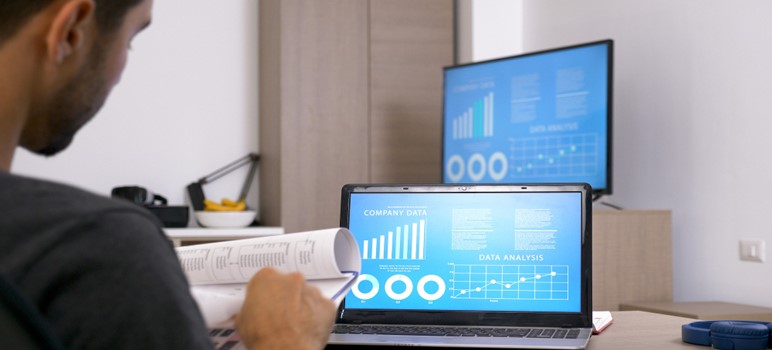In today’s digital age, where multitasking and maximizing productivity are essential, discovering innovative ways to utilize our devices is key. If you’re wondering how to make the most out of your laptop’s potential, consider leveraging its capabilities as a secondary monitor. This article will guide you through the process of using your laptop as a monitor, unlocking new dimensions of efficiency and convenience.

Section 1: Understanding the Benefits of Using Your Laptop as Monitor
First and foremost, let’s delve into the numerous advantages that come with repurposing your laptop as a secondary display.
1.1 Enhanced Productivity and Efficiency
By employing your laptop as a monitor, you can augment your workflow and complete tasks more effectively. Whether you’re a graphic designer, programmer, or a professional juggling multiple projects, having an additional screen can significantly increase your productivity. It allows you to have multiple windows open simultaneously, streamlining your workflow and minimizing the need to constantly switch between applications.
1.2 Portability and Flexibility
Another notable benefit of utilizing your laptop as a monitor is the portability it offers, giving you the freedom to work from any location. With your laptop acting as a monitor, you can transform any space into a makeshift workstation. This flexibility proves invaluable, especially for frequent travelers or those who prefer a change of scenery while working.
Read also: The 5 Best Laptops for Multiple Monitors
Section 2: Connecting Your Laptop as a Monitor
Now that we’ve explored the advantages, let’s proceed to the practical steps involved in setting up your laptop as a monitor.
2.1 Compatibility Check
Before proceeding further, it’s crucial to ensure that your laptop supports the necessary hardware and software requirements. Verify that your laptop has an available video output port, such as HDMI, VGA, or DisplayPort. Additionally, confirm that your operating system supports screen mirroring or extending displays.
2.2 Connection Methods
Once you’ve confirmed compatibility, there are two primary methods to connect your laptop as a monitor: wired and wireless.
2.2.1 Wired Connection
The wired approach offers a reliable and straightforward connection between your laptop and the primary device. Using an appropriate cable (HDMI, VGA, or DisplayPort), connect your laptop’s video output port to the corresponding video input port on the primary device. Afterward, configure the display settings on your laptop to enable screen mirroring or extending the display.
2.2.2 Wireless Connection
If you prefer a cable-free setup, a wireless connection can provide the freedom and convenience you desire. To establish a wireless connection, ensure both your laptop and primary device are connected to the same Wi-Fi network. Then, explore software options that allow screen mirroring or extending displays wirelessly. Applications like AirDisplay, Spacedesk, or Mirroring360 are popular choices.
Section 3: Optimizing Your Laptop as a Secondary Monitor
Now that you’ve successfully connected your laptop as a monitor, let’s explore some optimization techniques to make the most out of this dual-screen setup.
3.1 Adjust Display Settings
Fine-tuning the display settings ensures optimal visuals and a seamless user experience. Access the display settings on your laptop to adjust resolution, orientation, and screen arrangement. Experiment with different configurations to find what works best for your needs.
3.2 Utilize Productivity Tools
To further enhance your productivity, take advantage of various software applications specifically designed for dual-monitor setups. Applications like DisplayFusion, MaxiVista, or Actual Multiple Monitors offer features such as window management, taskbars, and hotkeys, allowing you to maximize efficiency and multitasking capabilities.
Read also: How to Setup Dual Monitors
How to Use Laptop as Monitor: Conclusion
Congratulations! You’ve unlocked a new level of productivity by using your laptop as a monitor. Embracing this dual-screen setup can enhance your workflow, improve efficiency, and provide the flexibility to work from anywhere. Now, go ahead and make the most of your laptop’s untapped potential!
